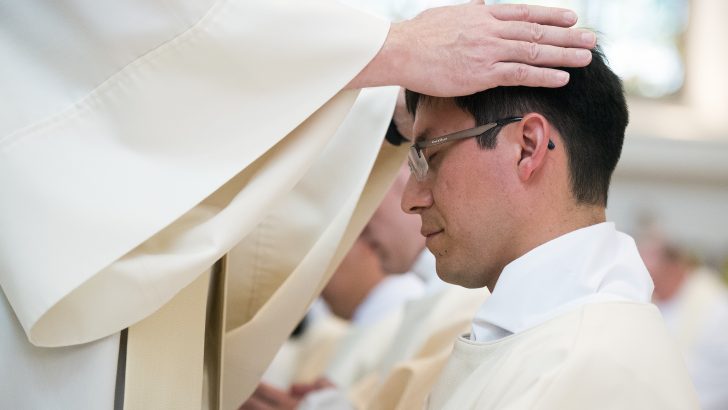Cardinal Jean-Marie Lustiger was the Archbishop of Paris until he retired in 2005. Lustiger – a convert from Judaism – was a towering figure in the global Church and considered a key ally in the reforms of Pope St John Paul II.
Among the projects Cardinal Lustiger himself embraced with gusto was the reform of the seminary in his sprawling diocese. In 1984 he first created a house where young men considering a vocation to the priesthood could spend a year of discernment preceding entry to the seminary. The following year, he decentralised the seminary and sent the seminarians to live and work in parishes while commuting for their studies.
Today, the Archdiocese of Paris has eight houses attached to a parish, where a dozen seminarians and two priests live.
Seminarians
In Lille, Archbishop Laurent Ulrich announced last autumn that 13 residents would leave the large building in the Saint-Maurice district that has housed seminarians since 1931 for a house in the Old Town. “We’re moving in a way from a Christian boarding school to a Christian house-share,” according to Fr Jean-Luc Garin, rector of Lille’s inter-diocesan seminary.
Seminaries came about at the time of the counter-reformation largely due to the fact that many priests at the time were appallingly badly educated. The success of the seminary was extraordinary in implementing a uniform training for priests across the board. The programme was rigid and consistent and received students largely from the boarding school regime of junior seminaries. The seminaries themselves became, as Fr Garin notes, effectively boarding schools designed to turn out a uniform one-size-fits-all priest.
Perhaps that might’ve made sense when the traditional norm was that young men entered seminary as adolescents and had effectively been earmarked to become priests from when they were four years of age.
All that has changed now. The most dramatic change, of course, is the huge drop in the number of people applying to begin priestly formation. The other notable change is that most candidates now enter after university, having worked for years in a profession or even in their 50s or 60s. They make a rather odd addition to a boarding school.
The Church in Ireland is currently working on a new programme for the formation of priests here. The so-called Ratio Nationalis will model a new way for the training of seminarians. Part of this will ensure that they are equipped to minister in the contemporary Church where collaboration and co-responsibility are a natural and vital way of conceiving of the Church.
This will take bold leadership and a model that moves farther and farther away from the whiff of the boarding schools will be not only desirable but necessary.
Irish seminarians are, of course, not entirely cut-off from the world. They already undertake pastoral work – including a year in a parish – but there is nothing like living and working in a parish to steep people in pastoral identity.
It is also true that both Maynooth and the Irish College have a wealth of vital experience and expertise. They are already sharing this with laypeople and those training to become permanent deacons and pastoral workers. Perhaps the next challenge is to help the seminaries increase their awareness of the need to be centres of ministerial formation for both lay and cleric alike.
Parish-based formation – bringing theological, philosophical and spiritual formation together with realistic and day-to-day pastoral experience – is an important part of the reform of priestly formation in Ireland.
The old seminary model was a very good idea in the 17th Century, but it is largely unfit for purpose in the 21st.
Michael Kelly is co-author of a new book with Austen Ivereigh How to Defend the Faith – Without Raising Your Voice – it is available from Columba Books.


 Michael Kelly
Michael Kelly